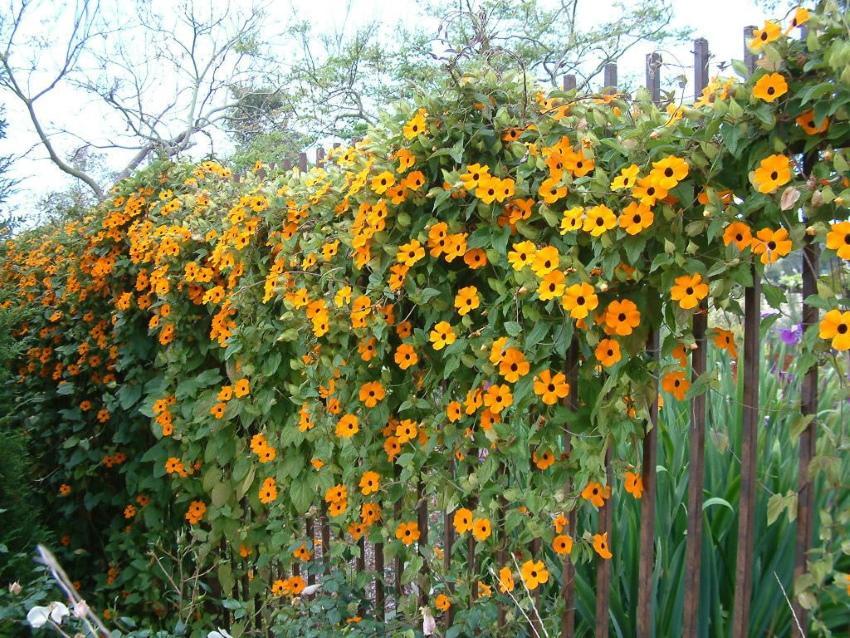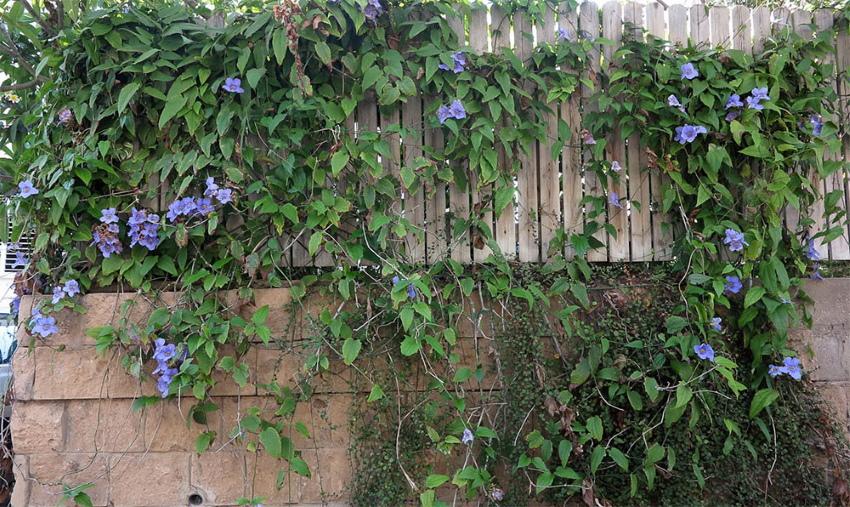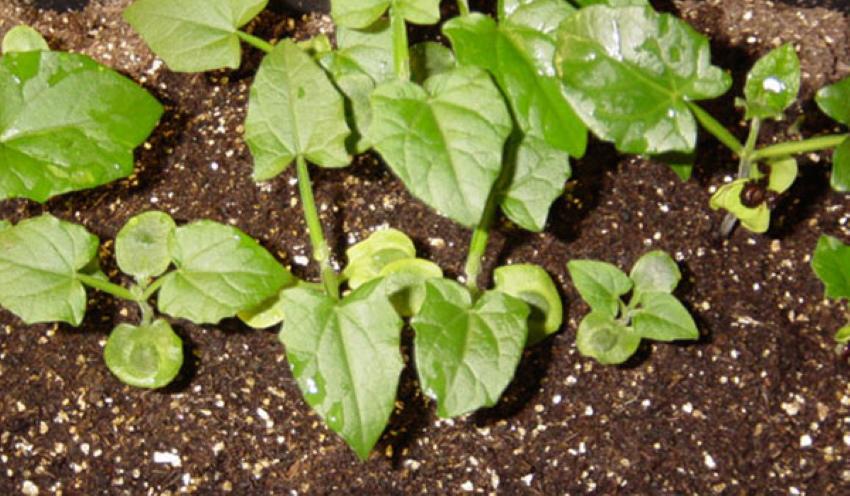Tunbergia - planting and care (photo) for a blooming liana
 Abundant flowering and original flowers with a black eye inside make this vine very popular. It is not surprising that more and more flower growers are interested in such a plant as tunbergia, planting and caring for which (photo) is easy. And the variety of varieties of this culture will be able to satisfy the desires of the most fastidious summer resident. And although the hot tropics are home to tunbergia, it has taken root well in our climate.
Abundant flowering and original flowers with a black eye inside make this vine very popular. It is not surprising that more and more flower growers are interested in such a plant as tunbergia, planting and caring for which (photo) is easy. And the variety of varieties of this culture will be able to satisfy the desires of the most fastidious summer resident. And although the hot tropics are home to tunbergia, it has taken root well in our climate.
Tunbergia - planting and care, photo

In the middle of summer, flowers begin to bloom alternately. On a long peduncle, funnel-shaped buds, single or located in groups, are attached to the lash. Their color can be very different, but most varieties have a fluffy core that is almost black in color. Flowering lasts until autumn.
Under natural conditions, tunbergia is a perennial plant that blooms almost all year round. But our winters are too harsh for her, so the culture in the open field grows like an annual. However, if desired, it can be grown in a pot as an indoor perennial flower.
How and where to plant
 Tunbergia reproduces mainly by seeds. They sprout well, but in order for the bushes to bloom earlier, it is better to sow seeds for seedlings in February-March.
Tunbergia reproduces mainly by seeds. They sprout well, but in order for the bushes to bloom earlier, it is better to sow seeds for seedlings in February-March.
In the month of May, after hardening, the grown seedlings are transplanted into the garden. The place should be well lit, but with little shade from the scorching midday rays. But it is recommended to add lime to the soil - its liana loves very much.
In group plantings, at least 45 cm is left between the bushes. You can plant it under an arch or install a support so that the liana has where and what to "climb".
Plant care in the garden
 Tunbergia generally does not have special requirements for care, and caring for it consists in simple procedures:
Tunbergia generally does not have special requirements for care, and caring for it consists in simple procedures:
- Moderate watering during the growing season and frequent and abundant once flowering begins.
- Spraying bushes in dry summer.
- Top dressing once a month with a mineral liquid complex.
- Removal of faded buds. You can also remove weak lashes that lag behind in development, and only draw juice from the bush.
 In early autumn, seeds begin to ripen. It is important to have time to rip them off before the boxes open. In winter, the bush will disappear in the open field anyway. But from the collected seeds in the next season, it will be possible to grow many new tunbergia.
In early autumn, seeds begin to ripen. It is important to have time to rip them off before the boxes open. In winter, the bush will disappear in the open field anyway. But from the collected seeds in the next season, it will be possible to grow many new tunbergia.